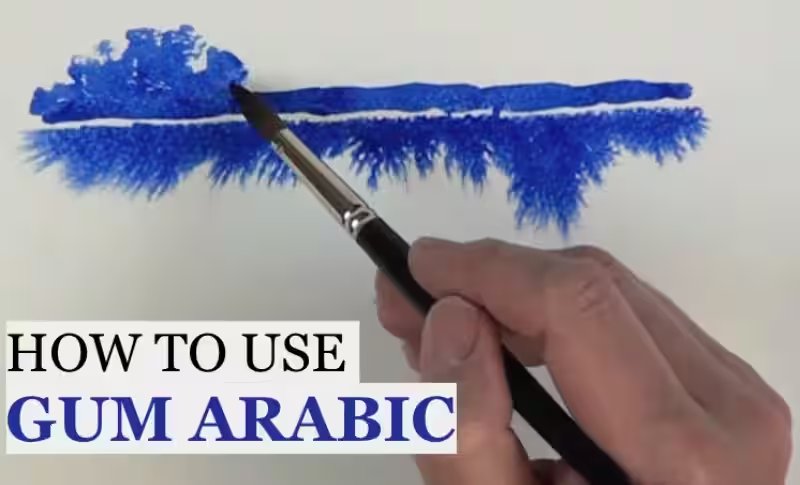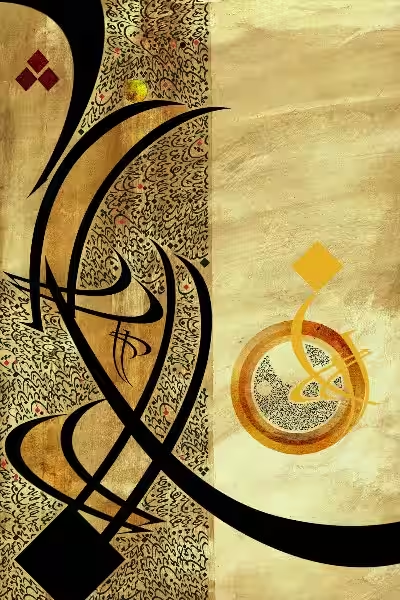
Watercolor painting is a captivating art form that allows artists to express themselves through vibrant washes of color. But achieving the desired effects and achieving longevity can sometimes be a challenge. That’s where gum arabic comes in, a natural ingredient that plays a crucial role in enhancing the watercolor experience.
Gum arabic is a sticky substance derived from the sap of acacia trees. It’s been used in various artistic applications for centuries, and for good reason. In watercolor, gum arabic acts as a binder, helping to hold pigments together and create smoother, more cohesive washes. It’s often found in watercolor paints, but it can also be used separately to create unique effects.
The Benefits of Using Gum Arabic in Watercolor
The magic of gum arabic lies in its versatility. It offers a range of benefits to watercolorists, allowing them to achieve a greater level of control and expression:
Enhances Color Intensity and Longevity
One of the main benefits of gum arabic is its ability to enhance color intensity. When mixed with watercolors, it creates a more stable suspension of pigments, preventing them from separating and fading over time. This results in richer, more vibrant colors that last longer.
Improves Flow and Control
Gum arabic helps to create a smoother, more controlled flow of paint. It acts as a natural medium, preventing the paint from becoming too thick or drying too quickly. This allows for more delicate brushstrokes and nuanced transitions between colors.
Creates Unique Textures and Effects
The possibilities with gum arabic extend beyond enhancing the paint itself. It can be used to create interesting textures and effects, adding another dimension to your artwork. For example, applying a layer of gum arabic before painting can create a resist effect, preventing the watercolor from adhering to certain areas, allowing for intricate details and patterns.
Exploring Different Ways to Use Gum Arabic
Gum arabic is a versatile tool that can be used in various ways to enhance your watercolor painting. Here are some techniques to explore:
Adding Gum Arabic to Watercolor Paint
The simplest method is to add a small amount of gum arabic solution to your watercolor paint. This will increase its viscosity and create a smoother, more controlled flow. You can experiment with different ratios to achieve your desired consistency. A simple solution includes dissolving a small amount of gum arabic powder in warm water. A general rule is that a 1:4 ratio of gum arabic to water will create a workable solution for adding to watercolor paint.
Using Gum Arabic as a Medium
Gum arabic can be used as a stand-alone medium, creating different effects depending on how it’s applied. For example, using a brush to apply a thin layer of gum arabic solution to your paper before painting can create a smoother, more even surface that’s less likely to absorb the watercolor too quickly. This is especially useful for layering washes or creating fine details.
Applying Gum Arabic as a Glaze
Gum arabic can also be used to create a glaze, which is a thin, transparent layer of paint that can be applied over existing layers to add depth, luminosity, or create a subtle color shift. This technique is often used to enhance the colors and textures of a watercolor painting.
Important Considerations when Using Gum Arabic
While gum arabic offers many benefits, it’s important to consider a few factors when working with it:
Drying Time
Gum arabic dries relatively quickly, so it’s important to work efficiently and apply it in thin, even layers. This will help to prevent cracking or peeling. If applying gum arabic to your watercolor paper, allow it to dry completely before applying your washes. Patience and planning will ensure success when using gum arabic.
Experimentation is Key
The best way to learn how to use gum arabic effectively is to experiment. There’s no one-size-fits-all approach, and different techniques will work best depending on your style and the effects you’re trying to achieve. Don’t be afraid to try different ratios, applications, and even add it to your paint directly to see what happens.
Gum arabic is a valuable tool that can help you unlock a new level of creativity and control in your watercolor painting. By understanding its properties and exploring its versatility, you can achieve richer colors, smoother washes, and unique textures that will enhance your artistic vision. From enhancing color intensity to creating resist effects, gum arabic adds a touch of magic to the watercolor journey.
Frequently Asked Questions About Gum Arabic in Watercolor
What is Gum Arabic and why is it used in watercolor?
Gum Arabic is a natural substance derived from acacia trees. It is a sticky resin that dissolves in water, forming a clear, viscous solution. In watercolor, gum arabic acts as a binder, helping to hold the pigments together and create a smooth, even wash.
How do I use Gum Arabic in watercolor?
You can add gum arabic to your watercolor paints, use it as a medium, or apply it as a glaze. Experiment with different ratios of gum arabic and water to achieve different consistencies and effects.
What are the benefits of using Gum Arabic in watercolor?
Gum Arabic can improve the flow of your watercolor paints, making them easier to blend and control. It can also enhance the color intensity and longevity of your paintings.
What are some important considerations when using Gum Arabic?
Gum Arabic can sometimes cause your watercolor paints to dry too quickly, so it’s important to experiment with different ratios of gum arabic and water to find the right balance for your needs. Keep in mind that gum arabic can also make your watercolor paints more prone to cracking, so it’s important to apply it in thin layers and allow it to dry completely before applying subsequent layers.
- Dissolve gum arabic powder in water, stirring continuously until a smooth solution is formed.
- Apply the solution to the desired areas using a brush, sponge, or other tools.
- Allow the gum arabic to dry completely before applying paint or other media.
- Experiment with different ratios of gum arabic and water for varying thickness and drying times.
- Clean up with water and soap after use.
- Store gum arabic powder in a cool, dry place to prevent spoilage.








